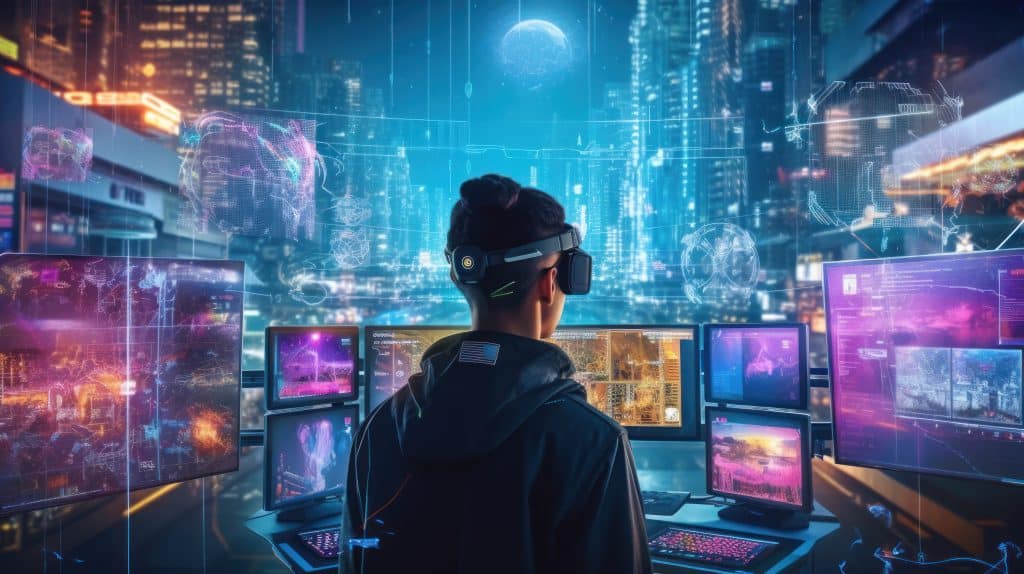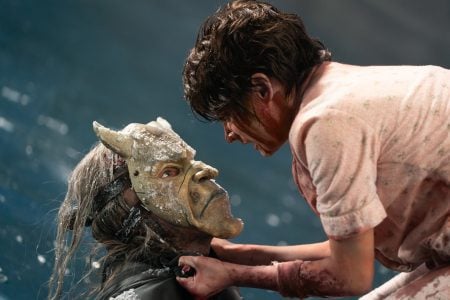Since the first 3D game appeared, there have been many improvements in the art of creating a realistic and immersive game world. In this article, we will look at some of these techniques and tools for creating 3D environments, as well as new trends in the field.
Understanding 3D Game Art
As a game artist, you don’t just create a 3D model. You’re creating an entire world for the player to explore and interact with. This means that your artwork has to work on many levels: it has to look good from different angles, fit into the environment, and tell a story about the characters or objects in that environment.
This is why many artists use reference materials when creating their work – they help you understand how light reflects off certain surfaces or how shadows might appear in certain places depending on the environment. For example, if you’re creating an underwater scene in which sunlight is refracted through water particles (rather than shining through them), making sure those particles look right will be very important!
Importance of Game Art in 3D Gaming
Game art is the visual representation of a game. It is important because it helps to convey the story and setting of the game, which can be used to enhance the gameplay. In addition, game-art can be used as an integral part of gameplay. For example, in many role-playing games (RPGs), characters look different depending on whether they are allies or enemies; this allows players to easily distinguish friends from enemies during combat by simply looking at them visually, rather than using text popping up on the screen when an enemy appears nearby – this approach would quickly make your eyes go blind!
Techniques and Tools in 3D Game Art Design
3D modeling is the process of creating three-dimensional objects, usually using a computer.
3D animation is the art of creating moving objects on the screen.
3D rendering is the process of turning a model into an image that can be displayed on a computer screen or printed on paper.
Texture mapping (or texturing) is a technique used in 3D graphics to map images onto polygons to make them look realistic at different angles. Texture maps are often utilized using software called a “texture mapping unit” or TMU (included in modern graphics cards).
Game engines are tools that allow you to create games without programming them yourself; they handle all aspects of game development – physical modeling, artificial intelligence systems – for you so you can focus on creating your own unique games! There are many varieties of engines, depending on what kind of experience you want to evoke in your players.
Creating Realistic and Captivating 3D Game Worlds
3D art is not just about realism. It is also used to create immersive game worlds.
The first step in creating a realistic and immersive game art 3d world is understanding what makes it feel real. Many people think that adding more detail and realism will make things look better; however, there are many factors that affect how believable a 3D environment looks:
- Lighting – good lighting can make even the simplest objects look beautiful (and vice versa). Make sure that all objects in the scene cast the correct shadows so that they appear to cast light on other surfaces or characters in the game world.
- Materials – Materials determine how light interacts with objects in real life, reflecting different amounts of color depending on their surface properties, such as gloss or roughness/matte, etc. So use these properties when creating objects such as walls or floors, as they will help give character to each area, as well as add depth by contrasting the textures used in each room!
Showcasing and Appreciating 3D Game Art
The first thing to consider when adding 3D art to your game world is how it will be used. Do you need a background? A foreground? Or do you want to use 3D models as part of an animation sequence? As with any art form, there are many ways to accomplish this task, and one way isn’t necessarily better than another – it’s all about what’s best for a particular project.
Once you’ve decided how best to introduce 3D assets into the game world (and whether they’re needed at all), you need to evaluate their quality against other assets already present in the environment. This may seem like an obvious step, but it can often be overlooked by developers who are inexperienced in creating realistic environments or who lack an understanding of what makes games visually appealing.
Finally, evaluating immersive factors such as lighting effects and other atmospheric elements (such as fog) that help players feel like they are actually in a virtual space, rather than just reproducing an animated scene on the screen; such details are very important, as even small differences can make a big difference when creating immersive worlds!
Evolving Trends in 3D Game Art
3D art has become an integral part of the gaming industry. Virtual reality has become more accessible than ever before and its popularity is growing every year, with new headsets appearing regularly. The intersection of virtual reality and 3D gaming is also becoming more prominent. Game engines are used to create immersive worlds that allow users to interact with them using motion tracking technology or controllers such as the Oculus Touch, Vive Tracker or Leap Motion Controller. This kind of experience is especially useful for artists who want to bring their creations into virtual reality without any programming knowledge!
Conclusion
There are many ways to improve the game world. The most important thing is to create a realistic and immersive environment that players will enjoy. This can be achieved by using various techniques and tools, such as lighting effects or even photorealistic textures for 3D objects.
Caroline is doing her graduation in IT from the University of South California but keens to work as a freelance blogger. She loves to write on the latest information about IoT, technology, and business. She has innovative ideas and shares her experience with her readers.






![‘Frankenstein’ Review – Guillermo del Toro’s Definitive Look At The Nature And Nurture Of Monstrosity [TIFF 2025] ‘Frankenstein’ Review – Guillermo del Toro’s Definitive Look At The Nature And Nurture Of Monstrosity [TIFF 2025]](https://cdn.geekvibesnation.com/wp-media-folder-geek-vibes-nation/wp-content/uploads/2025/10/Frankenstein-175_PF_20240430_20377_R-300x200.jpg)